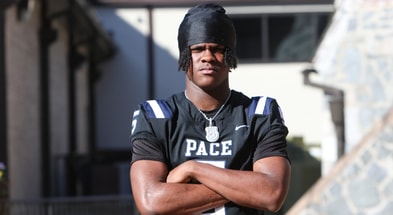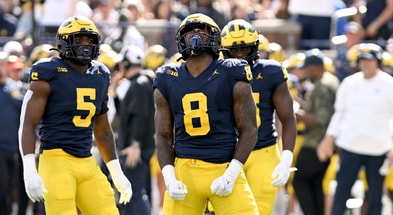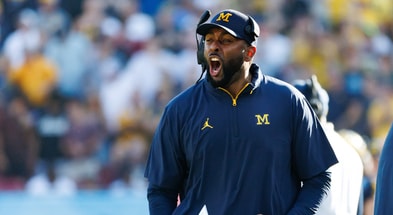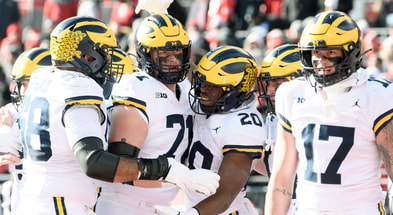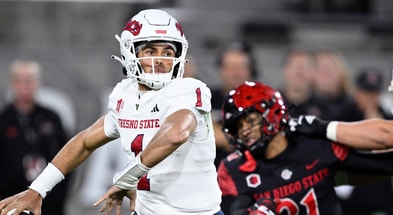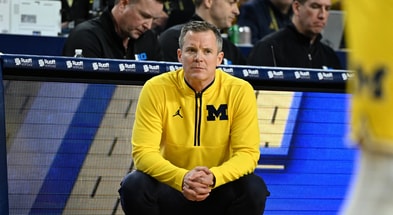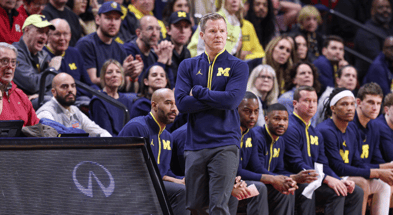Michigan leadership releases statement on Big Ten additions of UCLA, USC

College sports was rocked this week by the news that UCLA and USC would be joining the Big Ten Conference. This was met with warm welcomes from the current member institutions, including leadership at the University of Michigan.
Michigan athletic director Warde Manuel and interim president Mary Sue Coleman released a joint statement on Friday welcoming the two schools to the conference. They also vow that Michigan will be involved in the conversations about the logistics of the transition.
“On Thursday (June 30), the Big Ten Conference unanimously voted to accept the University of California, Los Angeles and the University of Southern California as full members in all sponsored sports effective August, 2024,” the statement read. “We are pleased to confirm this decision and extend a warm welcome to our newest members, both of which are renowned research universities, members of the Association of American Universities and championship-level athletic departments.
“In the coming days and months, and ahead of UCLA and USC officially starting Big Ten Conference competition, there will be many logistical questions and considerations for the membership to carefully consider. We will be inclusive and thoughtful in the many important aspects of our new conference makeup with a full commitment to a positive student-athlete experience and fiscal sustainability to support our mission.
Top 10
- 1New
Second-guessing Sark?
Ewers-Manning decision in spotlight
- 2Trending
Fiery crash video
Alijah Arenas football surfaces
- 3
Luke Altmyer
Calls out Nebraska QB commit
- 4Hot
Fan who fell from stands
20-year old former CFB player
- 5
Johntay Cook
Headed to ACC
Get the On3 Top 10 to your inbox every morning
By clicking "Subscribe to Newsletter", I agree to On3's Privacy Notice, Terms, and use of my personal information described therein.
“In the midst of a changing college sports landscape, we hope that you will join us in welcoming the Bruins and Trojans to the B1G family.“
The additions of UCLA and USC to Michigan’s conference family came quickly. Reports had circulated early in the day that there was interest in having them join the Big Ten. Hours and several media reports later, the Big Ten voted to accept its new members and have them start two summers from now.
Others believe that this is the next chapter in an arms race between the Big Ten and SEC. Some believe that the Big Ten’s expansion could go up to as many as 20 teams before it is all said and done.
The Big Ten statement on its new members
The Big Ten Conference Council of Presidents and Chancellors voted unanimously today to admit the University of California, Los Angeles and the University of Southern California to the Big Ten Conference effective August 2, 2024. Competition will begin for all conference sports in the 2024-25 academic year.
After receiving written applications from the two universities, Big Ten Conference Commissioner Kevin Warren, alongside conference athletics directors and the Council of Presidents and Chancellors, evaluated the applications based on a dynamic model weighting four primary principles with supporting criteria. The principles include academics and culture; student-athlete welfare, competition, and logistics; commitment to diversity, equity, and inclusion in sports; and financial sustainability. The model allows the conference to analyze criteria in a strategic and effective manner.
“As the national leader in academics and athletics for over 126 years, the Big Ten Conference has historically evaluated its membership with the collective goal to forward the academic and athletic mission for student-athletes under the umbrella of higher education,” Commissioner Warren stated. “The unanimous vote today signifies the deep respect and welcoming culture our entire conference has for the University of Southern California, under the leadership of President Carol Folt, and the University of California, Los Angeles, under the leadership of Chancellor Gene Block. I am thankful for the collaborative efforts of our campus leadership, athletics directors and Council of Presidents and Chancellors who recognize the changing landscape of college athletics, methodically reviewed each request, and took appropriate action based on our consensus.”
The Big Ten Conference has a lineage of transformation dating back to the historic meeting with seven university presidents on January 11, 1895, at the Palmer House in Chicago, Illinois. Those seven leaders created the blueprint for what grew into the modern intercollegiate sports model. Adding the University of California, Los Angeles and the University of Southern California continues the conference’s legacy of transformation and innovation in college athletics. The addition of the two universities remains subject to negotiation of final terms.

